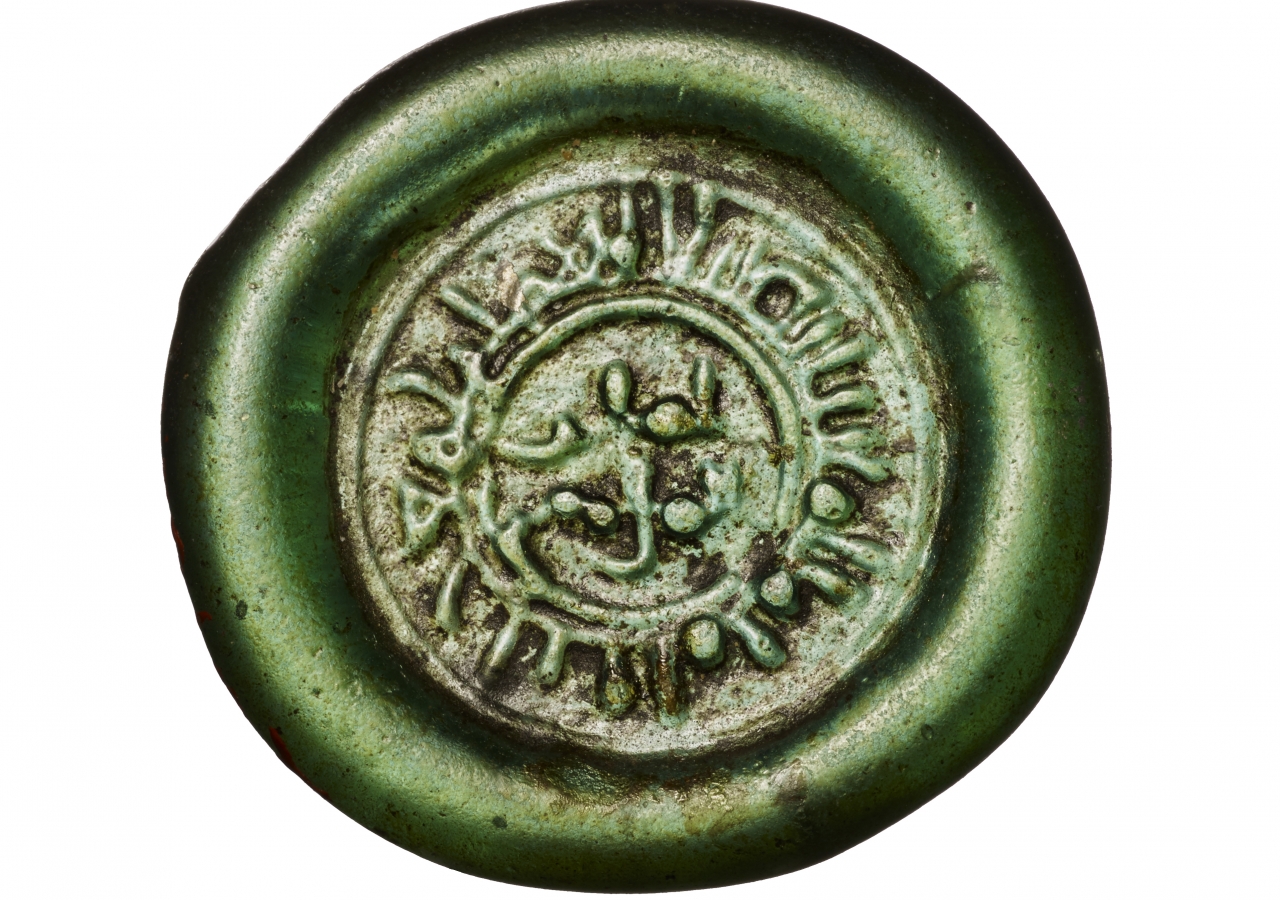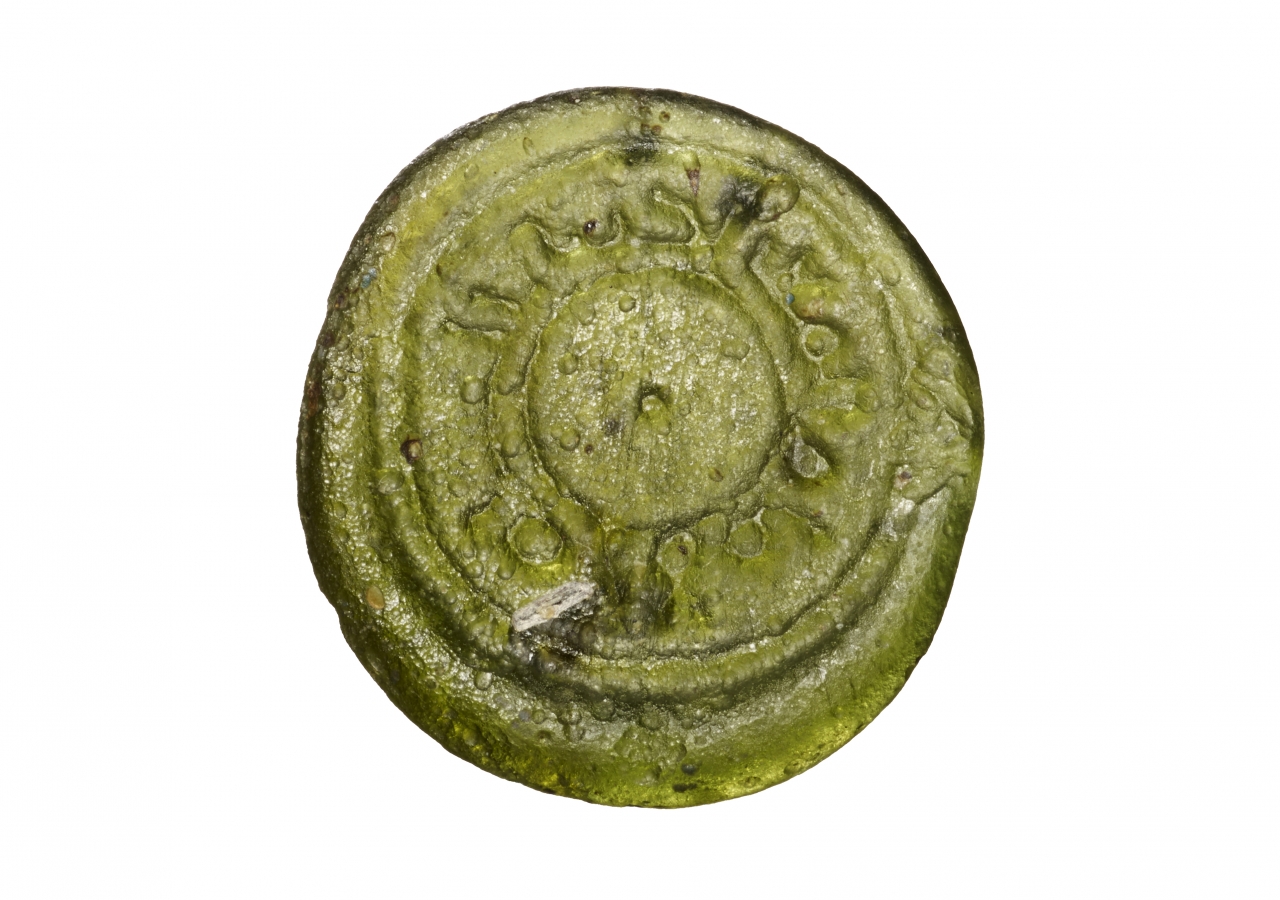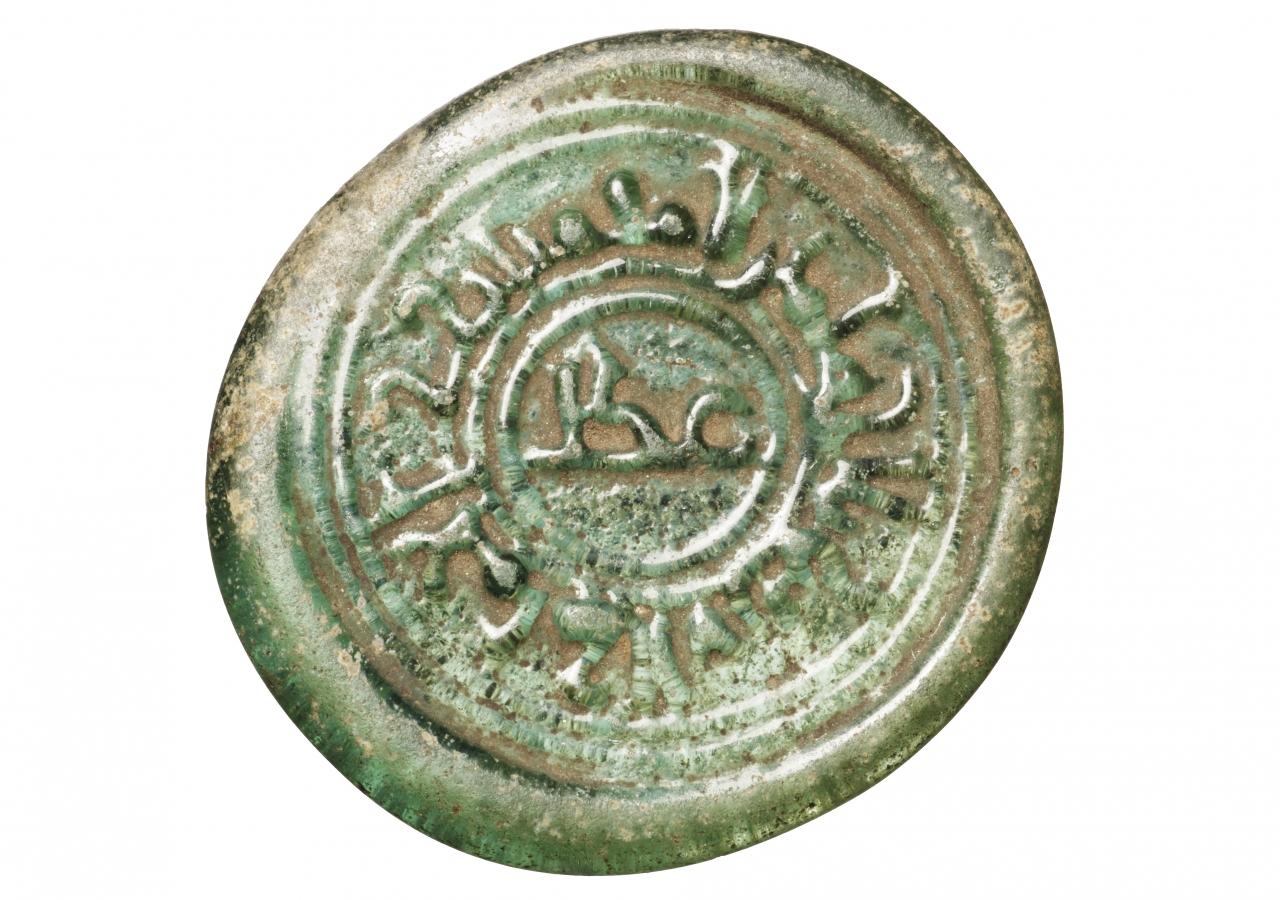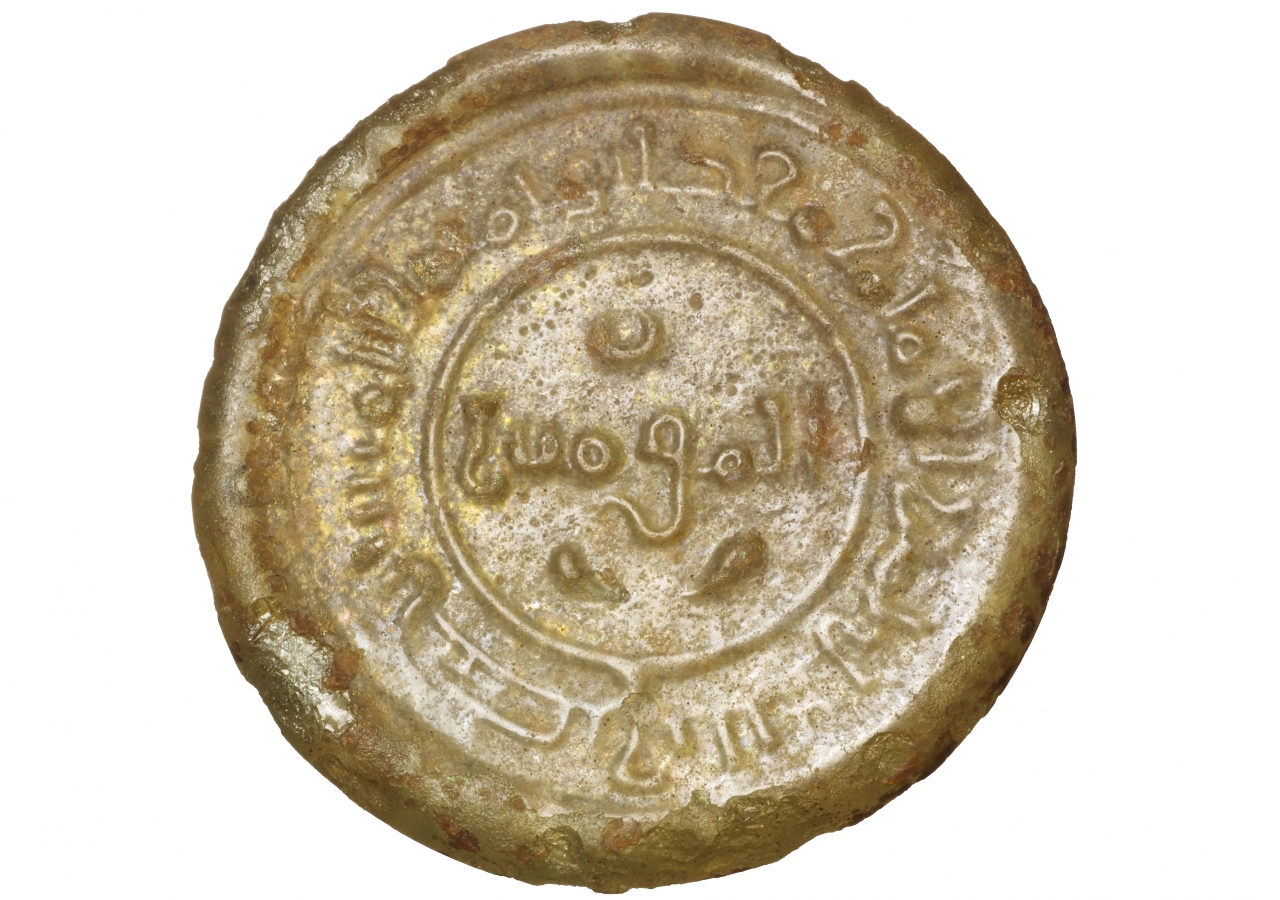A rare collection of Fatimid era (909-1171) colorful glass weights was presented to Mawlana Hazar Imam on the final Mulaqat of his USA visit, in Houston on March 22, 2018. Zahir Ladhani, Vice President of the Council for USA, made the presentation of this gift on behalf of the US Jamat to commemorate the Imam's Diamond Jubilee visit to the country.
The 147 glass weights in this collection consist of colorful opaque and translucent circular pieces of glass. They are among the few thousand examples which have survived from that period and are in various private and museum collections. Scholars seem to differ as to whether the glass weights may have been used as coin-weights or as currency - or both. They weigh from less than 0.02 of an ounce to over 0.33 ounces, in sizes ranging from those of a US nickel to a quarter.
A catalogue to accompany the collection was compiled by Alnoor Merchant, an independent consultant and advisor on Islamic art and rare books, who has contributed to the development of various institutional and private collections over the past three decades. Titled, Diverse are their hues, from a verse in the Holy Qur’an describing the diversity of Allah’s creation, the catalogue lists each one of the weights and their inscriptions, which reflect the political and religious authority of the Fatimid Imam-Caliphs.
The earliest weights in this collection date back to the period of Imam al-Muizz, (932-975 CE), the 14th Ismaili Imam and the fourth Imam-Caliph, who founded the city of al-Qahira al-Mu‘izziyya (the Victorious One of al-Mu‘izz), in 969, now Cairo. The city became a major seat of learning with the founding of Al Azhar, illustrating the significance placed by the Imams on scholarship, and who encouraged scholars of all faith persuasions to study and share their knowledge.
While the Fatimid dynasty was Shi'i, the majority of its subjects were Sunni, with a large population of Coptic Christians residing in Egypt, as well as Jews. The Fatimid Imams were able to maintain social harmony, and also appointed talented members of other faiths to senior administrative positions within the state bureaucracy.
The Fatimids exercised control over an empire stretching from North Africa to Sicily, Syria, Palestine, the Hijaz, including Mecca and Medina, and Yemen. Professor Heinz Halm, in his The Fatimids and their Traditions of Learning, writes that "Cairo became one of the centers of Islamic culture and art, and a focus of scholarship and science," where freedom of religion was tolerated and freedom of thought encouraged.
Most of the early weights in the collection up to the end of the 10th century appear in dark shades of green, but in the next century, they assumed other colors, such as lime, olive and yellow, and occasionally were almost clear. Three of the nine weights from Imam al-Muizz's successor, Imam al-'Aziz, contain the word ‘adl, or justice, making their first appearance on such glass weights, and echoing one of the key characteristics attributed to Imam 'Ali ibn Abi Talib.
The catalogue references Imam al-‘Aziz's Imamat as one that "epitomizes the cultural, intellectual and architectural efflorescence of Fatimid rule in Egypt." Halm goes further in describing his reign, which lasted more than 20 years (975-996), as "one of the happiest periods in the history of Egypt."
Imam al-Hakim bi-Amr Allah's Imamat was renowned for its focus on scholarship and the founding in 1005 of the Dar al-‘Ilm (House of Knowledge), sometimes referred to as the Dar al-Hikma (House of Wisdom). It was situated in the Fatimid palace in Cairo, with a library said to be one of the largest in the world at that time, containing over 100,000 books.
The catalogue notes that some of the glass weights from this period contain the phrase ‘Ali wali Allah, referencing the wilaya of Hazrat ‘Ali, which is normally added by the Sh'ia to the standard recitation of the shahada. Fatimid gold and silver coins from this time also contain this phrase.
During the 10th to the 12th centuries, the opulence of the Fatimid court, combined with its naval and military capabilities, made Cairo a hub of activity and a center for the creative arts. It was renowned for its pottery, glass and metalwork, rock crystal, ivory, wood-carving, and textiles.
Acknowledgment: Details of collection based on information provided by Alnoor Merchant.











